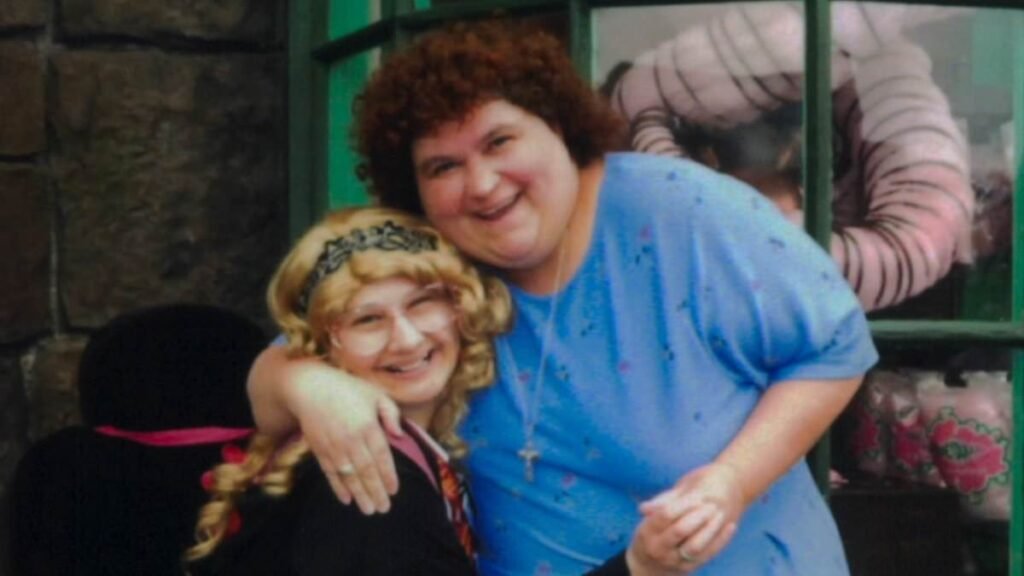Introduction
The tragic case of Dee Dee Blanchard and her daughter, Gypsy Rose, is one that has captivated audiences worldwide. Known for its shocking twists and complex family dynamics, the Dee Dee Blanchard crime scene played a crucial role in uncovering the disturbing reality behind this mother-daughter relationship. Dee Dee’s life revolved around presenting her daughter as severely ill, dependent, and fragile, yet what was truly unfolding was a story of manipulation, control, and hidden abuse.
Understanding the crime scene is key to grasping the complexities of this case. When police found Dee Dee’s body, the initial shock was soon replaced by deeper questions about her life with Gypsy. As investigators delved into the scene, they unraveled a tragic tale that highlighted the blurred lines between victim and perpetrator. The Dee Dee Blanchard crime scene serves as a chilling reminder of the harm that unchecked control and abuse can lead to, especially within a family.
Background: Who Was Dee Dee Blanchard?
Dee Dee Blanchard was a mother dedicated to her daughter, Gypsy Rose, or at least, that’s what she wanted the world to believe. From an outsider’s perspective, Dee Dee appeared to be a doting mother, tirelessly caring for her daughter, who seemed to suffer from a range of severe medical conditions. Gypsy was often seen in a wheelchair, her head shaved, and was told to be dealing with leukemia, muscular dystrophy, epilepsy, and other illnesses. Dee Dee attracted significant sympathy and support, gaining assistance from charities and even a free home.
However, what was happening behind closed doors was far from the caring, supportive image Dee Dee presented. Many now believe that Dee Dee was suffering from Munchausen syndrome by proxy, a mental health condition where a caregiver exaggerates or fabricates illnesses in someone under their care to gain attention and sympathy. This need for control left Gypsy trapped in a world of fabricated illnesses and limitations, with her every move dictated by her mother. Dee Dee’s actions and manipulations set the stage for the tragic events that would later unfold at the crime scene.
The Events Leading Up to the Crime Scene
Gypsy’s life under Dee Dee’s control was one of isolation, limitations, and despair. As she grew older, Gypsy began to question the legitimacy of her mother’s claims. Despite Dee Dee’s efforts to keep her daughter secluded from the world, Gypsy managed to make a few connections through online forums. This is where she met Nicholas Godejohn, a young man she felt she could confide in and, eventually, someone who could help her escape the grasp of her mother.
The relationship between Gypsy and Nicholas quickly intensified, with the two sharing deep emotional bonds as well as fantasies of escaping from Dee Dee’s control. Eventually, their conversations took a darker turn, and together, they plotted Dee Dee’s murder as the only way out of Gypsy’s trapped existence. This would lead to the infamous Dee Dee Blanchard crime scene, a tragic culmination of years of psychological abuse, manipulation, and a desperate desire for freedom on Gypsy’s part.
The Crime Scene: Discovery and Initial Investigation
When authorities discovered Dee Dee Blanchard’s body, it sent shockwaves through the community. Dee Dee was found stabbed to death in her home, and initially, it appeared to be a straightforward murder case. The brutality of the crime shocked investigators, and there were few immediate clues pointing toward the unusual dynamics that lay behind it. News of her death spread quickly, with many grieving the loss of a woman they believed was a caring mother facing difficult challenges.
However, as investigators began to analyze the scene, they noted unusual details that hinted at a more complex story. There were no signs of forced entry, and it soon became clear that Gypsy, Dee Dee’s supposedly disabled daughter, was missing. This led to growing suspicions about the actual circumstances surrounding Dee Dee’s death. Forensic evidence and witness interviews painted a new picture, one that would shift public sympathy away from Dee Dee and onto Gypsy, the daughter everyone thought was severely ill.
Forensic Evidence and Key Findings at the Crime Scene

The forensic team worked meticulously, gathering evidence from Dee Dee Blanchard’s home. Key findings included signs of a struggle, fingerprints, and, crucially, digital evidence that pointed investigators toward Gypsy Rose and her boyfriend, Nicholas. Messages found on social media accounts and texts exchanged between Gypsy and Nicholas provided a roadmap of their planning, intentions, and shared frustration with Dee Dee’s controlling behavior.
These digital clues played a crucial role in piecing together the events leading to Dee Dee’s death. Investigators uncovered how Nicholas had traveled to Dee Dee’s home, where he and Gypsy had followed through with their plan. They also found that Gypsy was not as physically limited as her mother had claimed. The investigation revealed that Gypsy was an active participant in the events that unfolded, but this didn’t lessen public empathy for her. Instead, it opened discussions on abuse, psychological manipulation, and the tragic impact of long-term victimization.
Gypsy Rose’s Arrest and Confession Dee Dee Blanchard Crime Scene
Gypsy Rose and Nicholas Godejohn were eventually arrested in Wisconsin, just days after Dee Dee’s body was discovered. Gypsy’s confession was filled with details of years of torment, her longing for freedom, and the steps she and Nicholas took to end Dee Dee’s control over her life. Her admission of guilt left authorities and the public torn between viewing her as a victim of abuse or as a calculating participant in her mother’s murder.
Gypsy’s confession revealed the depth of control Dee Dee had exerted over her life, from her fabricated illnesses to her dependence on Dee Dee for basic freedom. Though the confession didn’t absolve her of the crime, it gave context to the desperation she felt. The Dee Dee Blanchard crime scene became emblematic of a complex case where typical notions of guilt and innocence were blurred, highlighting the challenges of understanding trauma and its impact on decision-making.
Impact of the Crime Scene on Public Perception
As details of the crime scene and Gypsy’s confession emerged, public perception shifted dramatically. Initially, Dee Dee was mourned as a devoted mother, but soon, her reputation was overshadowed by the disturbing reality of her abusive behavior. People began to empathize with Gypsy, viewing her as a survivor rather than solely a perpetrator. The case sparked conversations about Munchausen syndrome by proxy, abuse, and the psychological damage caused by prolonged manipulation.
The crime scene’s revelations challenged people’s understanding of victimhood and blame. Gypsy, who had been treated as helpless her entire life, was forced to take drastic measures to escape her mother’s grasp. This led many to sympathize with her, even as she faced legal consequences. The case highlighted the importance of awareness about hidden abuse and the effects it can have on individuals’ mental health and actions.
The Aftermath and Legacy of the Case
Following the investigation and trial, Gypsy Rose Blanchard was sentenced to prison, but with a degree of empathy from both the legal system and the public. Nicholas Godejohn, meanwhile, received a harsher sentence due to his active role in carrying out the murder. The aftermath of the Dee Dee Blanchard crime scene has continued to resonate with audiences as an example of how deeply abuse can impact family dynamics and lead to tragic outcomes.
The case has since been covered in documentaries, television series, and books, each shedding light on the complexities of abuse, control, and survival. Dee Dee’s manipulation and Gypsy’s desperate escape have remained topics of fascination and reflection, serving as a reminder of the unseen struggles that many face. The legacy of the case lies in its power to raise awareness of hidden abuse and inspire change in how these cases are recognized and addressed.
Conclusion Dee Dee Blanchard Crime Scene
The Dee Dee Blanchard crime scene is not just a story of murder; it’s a reflection of the deep psychological scars that abuse can leave. By examining this case, we gain insight into the devastating effects of unchecked control and manipulation within families. Gypsy’s story continues to resonate with people because it speaks to a universal desire for freedom, the right to self-determination, and the tragedy that unfolds when these are denied.
This case serves as a somber reminder of the importance of mental health support and community awareness to prevent similar tragedies. For Gypsy, her journey will continue as she works to rebuild her life, while the public is left with questions about justice, accountability, and the cost of survival in a world where family can sometimes be the greatest threat.



